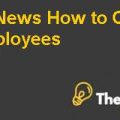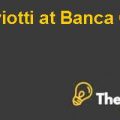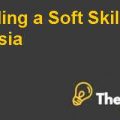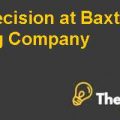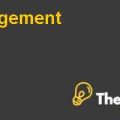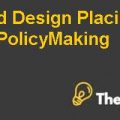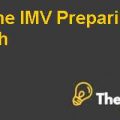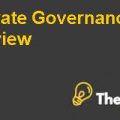
TOPIC: EMPLOYEE ENGAGEMENT & EMPLOYEE INVOLVEMENT
Employees are organization’s core assets and this human capital needs die hard consideration (Manville and Ober 2003). Employee engagement and involvement is dependent on their satisfaction level. A satisfied workforce is a workforce that generates hard numbers for the organization in terms of healthy returns. An organization is a mix of two types of employees that consist of: one type of employees help the organization to flourish by helping it to sustain the competitive advantage and the other type of employees are those who are termed as jerks in the organization and they directly or indirectly makes the organization suffer (Sutton 2007). Employee turnover, dissatisfaction and the workplace deviance are all pertinent causes of lower employee morale, involvement and engagement. In addition to this, the root cause of this entire negative employee attitude is that, employees’ interest and organizational interest are not aligned in a proper way (Boswell, Bingham and Colvin 2006). Moreover, according to a research, there is a correlation found between employee engagement and performance and between employee workplace deviance and employee engagement (Johnson 2011).
Employees who are labeled as jerks in the organization contribute to the damage caused to the organization at the maximum level (Sutton 2007). They not only cause internal damage in the form of employee politics and unions etc. but they also cause external damage that is harms the reputation of the organization and investors’ confidence by creating obstacles for the recruitment of good candidates as well as by increasing the churn levels in the organization that have a negative impact on the employee retention, too (Sutton 2007). In addition to this, the jerks also make the organization not a viable place to stay, by deteriorating other employee’s creativity and innovation along with mal-functioning the cooperation among employees (Sutton 2007).
For an organization to become successful and leader amongst the competitors, the first and foremost thing to do is to embrace ethics in the organization. Ethics should be embraced and communicated with the employees through every possible portal so that it becomes crystal clear in the mind of the employees that what workplace behavior is acceptable and what is not acceptable; which should be penalized accordingly (Sutton 2007). There should be no blind copying or dirty politics, unsophisticated attitude, silos, internal games or harassment in the organization. An organization needs to free itself from all of these viruses by making the place a more collaborative and interactive one to work for (Sutton 2007). In addition to this, employees must feel that are treated equally. The egalitarian approach that aims to manage the human personnel needs to be fully implied in an organization. This is because if an employee feels that he or she is treated unequally or sees that justice (whether distributive or procedural) is not there in the organization then he or she repents either intentionally or unintentionally (Sutton 2007).
For an organization to achieve the objective of being a meritocratic, shared and ethical one that embraces freedom of speech; it should focus on following the architecture of citizenship according to the Athenian model (Manville and Ober 2003). Athenian model of architecture of citizenship is a combination of two principles that led the warriors in the war defeat their opponents in earlier times. Firstly, they didn’t impose their decisions on the warriors and made them feel heard and the second is a holistic culture appraisal that refers to transparency (Manville and Ober 2003). The same concept is applicable in an organization from an employee’s perspective. An organization should implement the Athenian model in its processes by helping the organization and its employees to grow purely. In addition to this, the transparency principle should be followed, which helps employees to know that decisions are taken by the organization and the true reason behind the implementation of any policy (Manville and Ober 2003). An employee needs to know at the foremost level that how an organization’s actions will impact an employee individually and employee safety in the organization should fostered regularly.
This is not solely the responsibility of an organization to look after each and every employee’s welfare but also is the responsibility of the managers under whose immediate supervision the employee works. They should act as agents of change by embracing change at every level, which will help them to lead and make employees follow (Vlachotsicos 2011). First of all, the manager needs to act modestly and do not fear in communicating what is good and what is bad for the organization (Vlachotsicos 2011). He needs to belief in his credentials, which will have positive vibes on his sub-ordinates. He should not only nod but also encourage disagreements to his views while focusing on the agenda that manager must not impose his decision on his sub-ordinates and should welcome opinions from his employees so that they feel considered (Vlachotsicos 2011).
Therefore, an organization should enforce rules and regulations, which make it obvious to the people at authoritative positions ...........................
This is just a sample partial case solution. Please place the order on the website to order your own originally done case solution.

